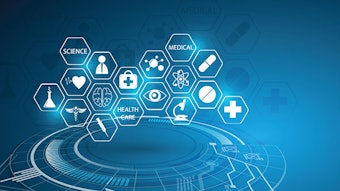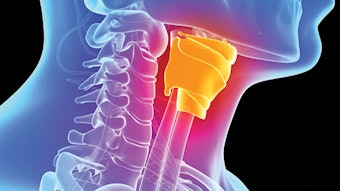Embracing future learning today
A fast-moving technological landscape is changing how learning takes place. The rise of learning technology has spawned the evolution of acquiring knowledge and skills to a type of learning delivery that can be done anytime, anywhere, and is “learner-centric” rather than teacher-based.
 James C. Denneny III, MD
James C. Denneny III, MD
AAO-HNS/F EVP/CEO
A fast-moving technological landscape is changing how learning takes place. The rise of learning technology has spawned the evolution of acquiring knowledge and skills to a type of learning delivery that can be done anytime, anywhere, and is “learner-centric” rather than teacher-based. We are advancing from management and social sciences to neuroscience in the formulation of best learning practices. Amid this backdrop, we must provide, monitor, and regulate education materials that allow physicians to maintain professional competency.
The traditional model of providing educational content and Continuing Medical Education credits through meetings and conferences; print materials, such as the Home Study Course; eBooks; webinars; and clinical fundamentals is amenable to conversion to more contemporary, interactive formats, such as the format of “Patient Management Perspectives.”
I recently attended a talk by Britt Andreatta, PhD, CEO, 7th Mind Inc., chief learning officer at Lynda.com, and an expert on education and organizations. Her presentation, “The Future of Learning,” highlighted many of the following concepts.
The evolving learning technology ecosystems will consist of the creation and consumption of educational content that offers a varied learner experience in many types of environments, across many different platforms.
Modern learners engage in education in a variety of circumstances and locations. Elucidat, an elearning software company, says 52 percent of learners will engage at the point of need, 47 percent in the evenings and on weekends, 42 percent at their office desk, 30 percent were alerted to updates and 27 percent on the way to and from work. Satisfying these diverse needs will require multiple platforms.
Successful teachers in this new era will employ various strategies to engage learners in their preferred learning environments. Flexibility and adaptability within program options will be key to serving a range of clients with a multiplicity of needs. Our audience will include students; residents; practicing physicians, both within otolaryngology and related specialties; allied health providers; and the growing number of patients seeking health information.
Several innovative processes have increased engagement in learning efficiency and allowed accurate tracking of educational activities from multiple sources. As utilization increases and experience allows objective analysis of each of these tools, it will become clearer which will be the best candidates to incorporate into our learning portfolio. Evidence shows that “engaged learners” who enjoy the format they are using, have significantly higher retention rates. Current learning management systems will be augmented or replaced by a number of exciting, innovative learning models in the near future.
Collaborative learning communities have great potential to use shared resources and “group think” approaches to teach team-building dynamics in the team-based care models that are becoming the fifth expected model of care delivery in our evolving healthcare system. While gamification has not extensively penetrated medical education yet, early ventures have shown increased engagement, retention, and persistence in those who have participated in learning activities using this approach (See the June issue of Otolaryngology–Head and Neck Surgery.)
Video learning platforms could open the door for a number of applications, including practice learning methods with frequent repetition, peer-driven assessment and feedback, and coaching and mentoring of the learner. This technique allows several preferred related methodologies to be used together in an on-demand model. Interactive and immersive simulation models are teaching complex interpersonal and procedural skills by engaging cognitive and emotional processes that turn new skills into daily routines. This method uses artificial and human intelligence and can be adapted for individual and group learning exercises. Perhaps the most exciting of these is “in body virtual reality,” which can teach hard and soft procedural skills in a safe environment. This particular technology has potential to incorporate distance learning from experts worldwide with on-demand functionality.
The Foundation has been systematically upgrading our systems and increasing options to access our content through our Annual Meeting format changes and in AcademyU®. Our current interactive products have been well received by learners. We will continually assess the above-mentioned technologies, and others as they come on the scene, for applicability into AcademyU. The future for medical education is exciting and bright.











